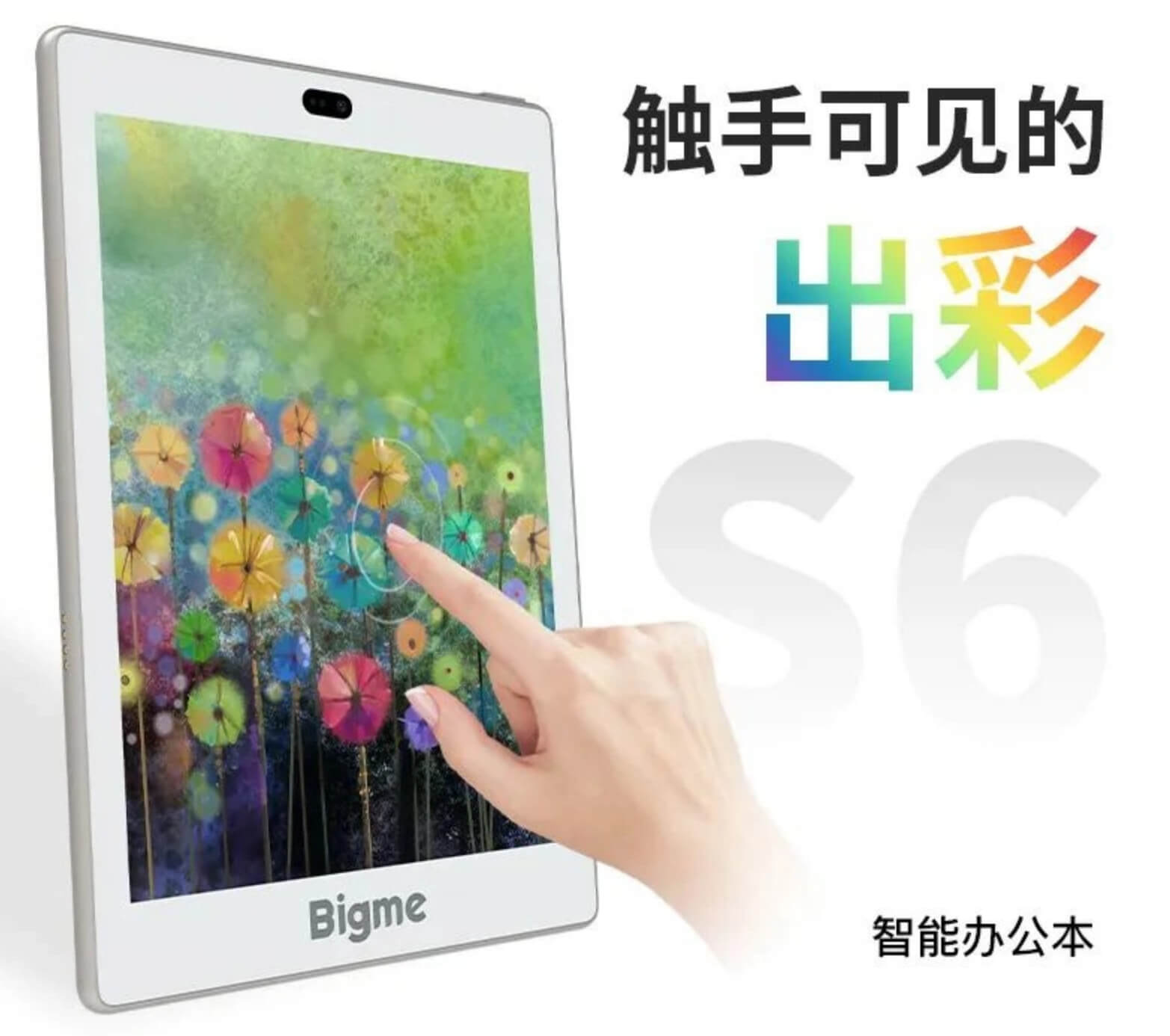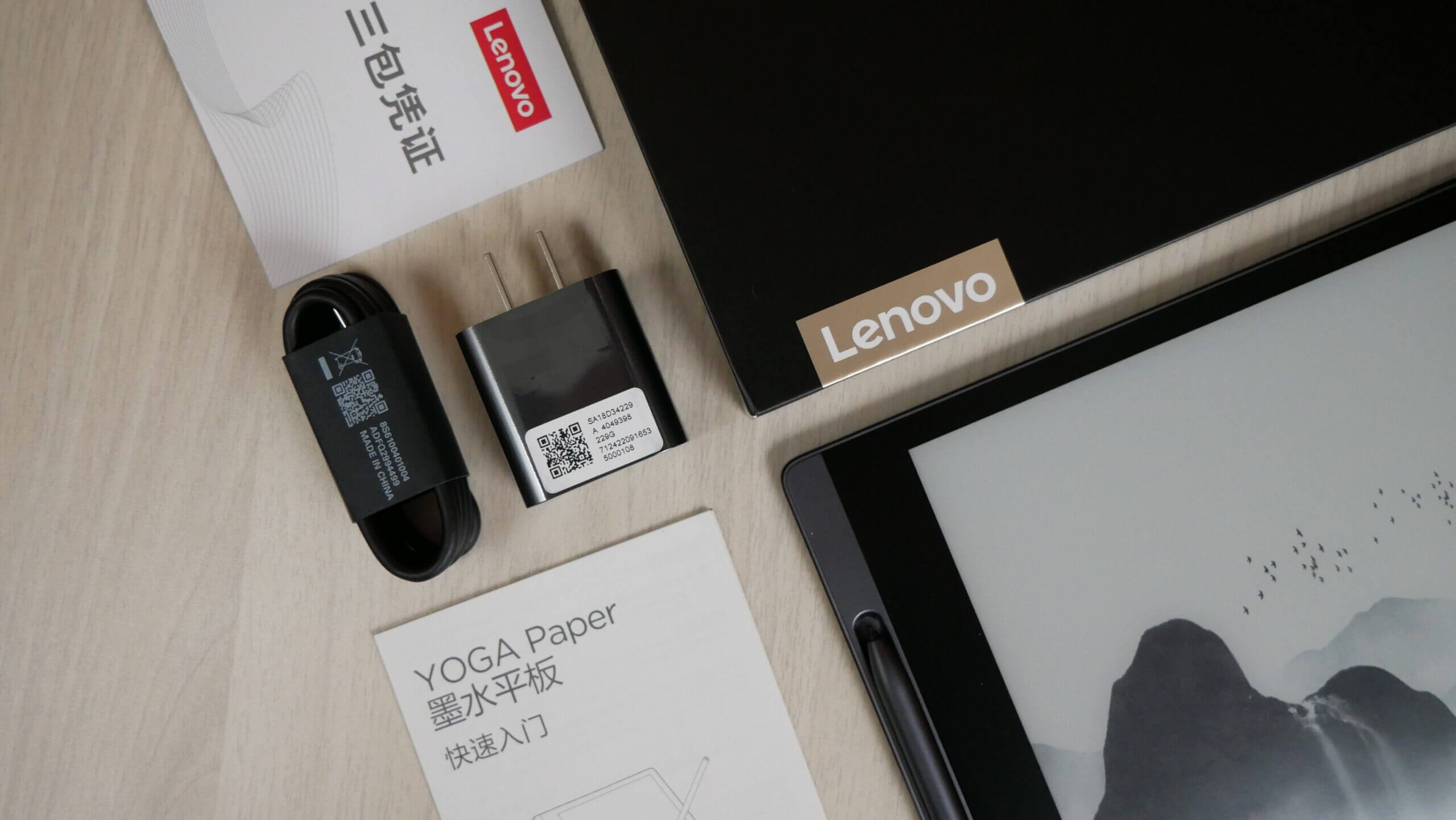Lenovo has invested in E INK e-paper in the past. They released a couple of laptops with a secondary screen, but they were fairly expensive and did not sell that well. Within the past few weeks the company decided to capitalize on the growing e-note space to issue their first dedicated E INK product, the Yoga Paper. Lenovo is a big player in the consumer tech market, so suffice to say, they might have a serious competitor to the Huawei MattePad Paper. You can buy the Yoga Paper from the Good e-Reader Store and it comes with a free case and stylus.
The YOGA Paper e-note has an 10.3-inch E INK Carta HD e-paper screen with a resolution of 2000 x 1200 pixel and 212 PPI. This is the first purely E INK device that Lenovo has ever made and it is very compelling. The screen is flush with the bezel and protected by a layer of glass. Users can take advantage of the front-light to comfortably read in dark or dimly lit environments, although you can also turn off the light and see the screen using only ambient light. And the tablet works with a cover that automatically puts the device to sleep when the screen is covered.
The matte screen layer also aids in writing by providing a non-slippery surface while also restoring the real damping of the nib. The pen is also extremely responsive having just 23ms latency, all of which, Lenovo said, offers a silky-smooth writing experience. The stylus is similar to the iReader X Pen, however it is a small smaller. There is 4,095 degrees of pressure sensitivity, so the harder you press, the thicker the lines become. The screen also has palm rejection technology.
Overall, the basic design includes slim bezels on all three sides and a thicker ledger on the left, which also comes with a groove for hosting the digital pen. Lenovo said the thickish left stem allows for ease in holding the device and allows for both left-hand and right-handed users. The user interface also offers a lot of customization options. For instance, the menu bar can be removed to allow for displaying more content.
Underneath the hood is a a Rockchip RK3566 processor, 4GB of RAM, 64GB of storage. It has Bluetooth 5.2, USB-C and a 3,500 battery, which is rated 10 weeks before a recharge. It supports optical character recognition (OCR) for note-taking, although its stylus could also be used for drawing. You can connect the Yoga Paper to an external display, since it has wireless support for this sort of thing.
The UI also supports split-screen operation with one half operating independently of the other. As Lenovo stated, one use case scenario can be language translation with one-half of the display used to show the original content and the translated portion displayed on the other half. Plus, there are ways to customize the wallpaper, clock, calendar, notes, messages, and such. Also, with the more than 70 note-taking templates that the device comes with, it’s easy to get started with note-taking right away. Other convenient features include conference recording and note playback, or conversion of handwriting to text along with easy sharing options as well. All of this can make things a lot easier for office workers, students, teachers, and researchers alike.
The Lenovo ships with Android 11 and has a small app store, filled with Chinese apps. Unfortunately, you cannot sideload in your own apps or an alternative app store. Lenovo disabled apps from unknown sources with this model. It remains to be seen if their Smart Paper, which is the model for an international release will be any different.
Michael Kozlowski is the editor-in-chief at Good e-Reader and has written about audiobooks and e-readers for the past fifteen years. Newspapers and websites such as the CBC, CNET, Engadget, Huffington Post and the New York Times have picked up his articles. He Lives in Vancouver, British Columbia, Canada.

